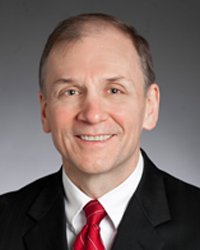MADISON, Wis. (AP) -- Two Republican lawmakers are looking to dethrone Wisconsin's Lemon Law King.
Rep. Bill Kramer, of Waukesha, and Sen. Jerry Petrowski, of Marathon, have crafted a bill that would relax Wisconsin's vehicle lemon law by erasing mandatory consumer damage awards, shrinking the window for filing a lawsuit and giving manufacturers more time to deliver a replacement vehicle or refund.
At the center of it all is attorney Vince Megna, who touts himself as the Lemon Law King. Megna has been feuding with the GOP since Gov. Scott Walker signed a bill in 2011 limiting attorney fees after Megna collected more than $150,000 in an auto-repair dispute. He's posted satirical and sometimes profane videos blasting Walker and mounted a failed campaign this spring to unseat conservative-leaning Supreme Court Justice Pat Roggensack.
Megna won a huge lemon law judgment against Mercedes-Benz USA LLC last year stemming from a 2005 lawsuit. Megna accused the company of refusing to grant his client a refund for a defective $56,000 sedan.
The company argued Megna's client never supplied all the information it needed to provide the refund within the lemon law's 30-day window in an effort to set up the lawsuit. The case bounced around Wisconsin courts for years. The state Supreme Court in May 2012 ultimately sided with Megna, who went on to collect $618,000 in damages, interest and attorney fees. Megna said he's still seeking about $300,000 in additional fees from the company.
Kramer and Petrowski didn't mention Megna by name in a memo they sent to legislators seeking co-sponsors. But they specifically cited the Mercedes-Benz case as an example of attorneys abusing loopholes in the lemon law. A coalition of state and national automaker associations, including the Alliance of Automobile Manufacturers and the Truck and Engine Manufacturers Association, is backing them up.
"The law places unreasonable and unworkable requirements on vehicle manufacturers that allow lawyers like self-proclaimed 'Lemon Law King' Vince Megna to win outsized awards that have no nexus to fairness or the underlying goals of the law," the coalition said in an email to legislators asking them to sign onto the bill.
Megna said Kramer and Petrowski's bill would "gut" the lemon law but wouldn't stop him. He promised to continue filing lawsuits in federal court, saying it's easier to win lemon law cases there.
"The lemon law is not a partisan thing," he said. "It helps everybody. To gut it like this because of me is just ridiculous. But I'll make more money. If it's about money, I'll file twice as many lawsuits."
Wisconsin's lemon law, regarded as one of the toughest in the country, allows consumers to demand a manufacturer for a new car or a refund if the manufacturer fails to repair a defect covered by warranty in four tries. The manufacturer has 30 days to deliver the refund or the car after the consumer hands over the title to the old car.
Consumers also can bring civil lawsuits under the law. If they win, a judge must award them twice the amount of any monetary losses, along with costs and attorney fees.
Under the Republicans' bill, judges and juries would be allowed to issue damage awards, costs and attorney fees as they see fit. Damages would be capped at the consumer's actual losses, however.
A manufacturer would have 45 days instead of 30 to deliver a replacement vehicle; if the manufacturer can't deliver one by the 45th day, the consumer would get a refund. Commercial vehicle manufacturers would have 120 days. Consumers would have 30 days to hand over any information a manufacturer wants or lose their right to sue. Consumers also would have to file any lawsuits within two years of first receiving the vehicle; currently they have six years.
Kramer and Petrowski stressed in their sponsorship memo consumers could still get a new car or a refund and could still sue if they don't get either in a timely fashion.
"Bottom line, the bill preserves our strong consumer protections but eliminates any incentives for legal tricks," Petrowski said in an email statement to The Associated Press. Kramer didn't return messages left at his Capitol office.
A spokeswoman said Assembly Speaker Robin Vos, R-Burlington, supports the measure and would like to see the full Assembly vote on it yet this spring. A spokeswoman for Senate Majority Leader Scott Fitzgerald, R-Juneau, said Fitzgerald hasn't reviewed the bill yet.
Megna said the auto manufacturers he tangles with are corporate giants and should be able to handle the lemon law's requirements. And he pledged to keep filing lawsuits under federal consumer protection laws.
"They think they're hurting me and other lawyers," he said, "but they're not."
Source: http://news.yahoo.com/gop-bill-limit-damages-under-162835470.html
Prince Harry naked Prince Harry Vegas Melky Cabrera Mayim Bialik Rich Kids of Instagram felix hernandez julia child







 PITTSBURGH?Carnegie Mellon University has named David A. Dzombak to head its Department of Civil and Environmental Engineering (CEE), effective Aug. 1. He succeeds James H. Garrett, Jr., who in December 2012 was named dean of CMU?s top-ranked College of Engineering. CEE acting head Irving Oppenheim will continue to lead the department until Dzombak assumes his duties.
PITTSBURGH?Carnegie Mellon University has named David A. Dzombak to head its Department of Civil and Environmental Engineering (CEE), effective Aug. 1. He succeeds James H. Garrett, Jr., who in December 2012 was named dean of CMU?s top-ranked College of Engineering. CEE acting head Irving Oppenheim will continue to lead the department until Dzombak assumes his duties.